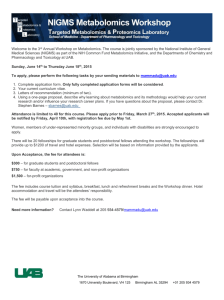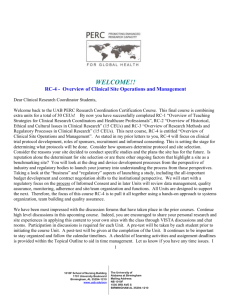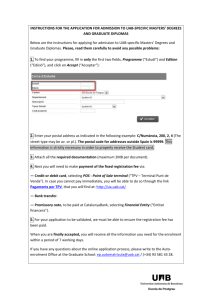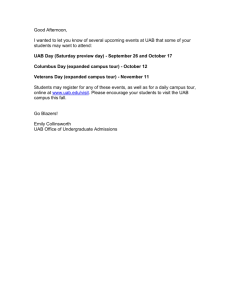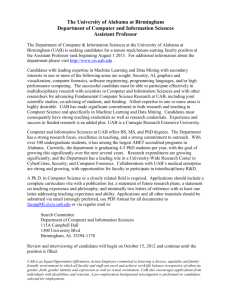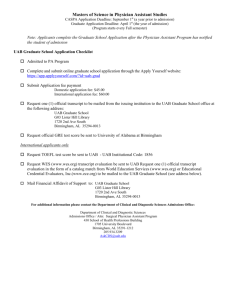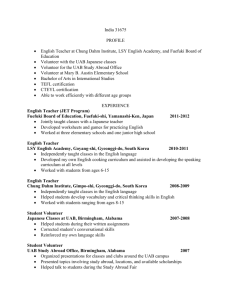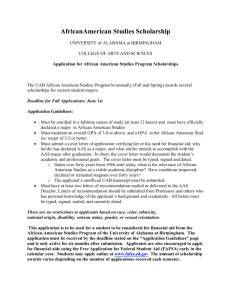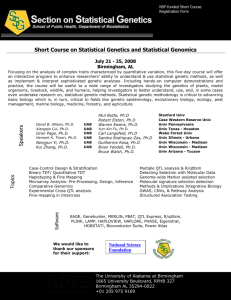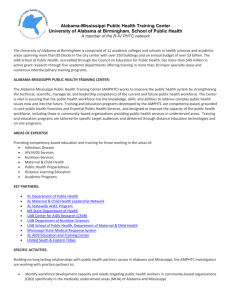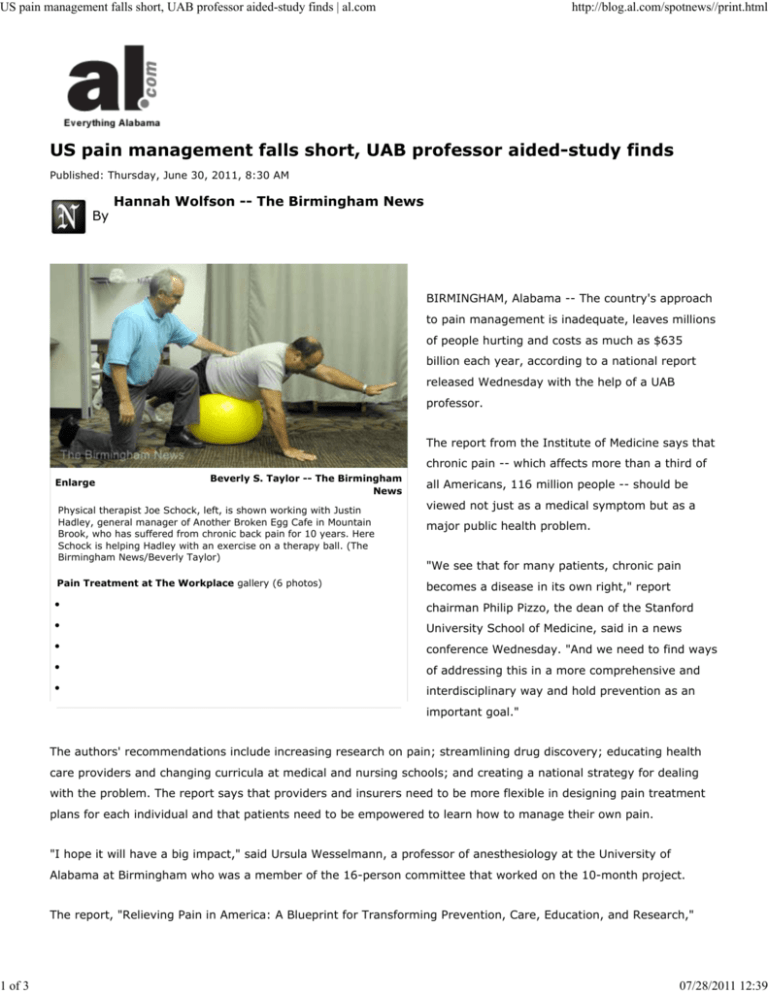
US pain management falls short, UAB professor aided-study finds | al.com
1 of 3
http://blog.al.com/spotnews//print.html
US pain management falls short, UAB professor aided-study finds
Published: Thursday, June 30, 2011, 8:30 AM
By
Hannah Wolfson -- The Birmingham News
BIRMINGHAM, Alabama -- The country's approach
to pain management is inadequate, leaves millions
of people hurting and costs as much as $635
billion each year, according to a national report
released Wednesday with the help of a UAB
professor.
The report from the Institute of Medicine says that
chronic pain -- which affects more than a third of
Enlarge
Beverly S. Taylor -- The Birmingham
News
Physical therapist Joe Schock, left, is shown working with Justin
Hadley, general manager of Another Broken Egg Cafe in Mountain
Brook, who has suffered from chronic back pain for 10 years. Here
Schock is helping Hadley with an exercise on a therapy ball. (The
Birmingham News/Beverly Taylor)
Pain Treatment at The Workplace gallery (6 photos)
all Americans, 116 million people -- should be
viewed not just as a medical symptom but as a
major public health problem.
"We see that for many patients, chronic pain
becomes a disease in its own right," report
chairman Philip Pizzo, the dean of the Stanford
University School of Medicine, said in a news
conference Wednesday. "And we need to find ways
of addressing this in a more comprehensive and
interdisciplinary way and hold prevention as an
important goal."
The authors' recommendations include increasing research on pain; streamlining drug discovery; educating health
care providers and changing curricula at medical and nursing schools; and creating a national strategy for dealing
with the problem. The report says that providers and insurers need to be more flexible in designing pain treatment
plans for each individual and that patients need to be empowered to learn how to manage their own pain.
"I hope it will have a big impact," said Ursula Wesselmann, a professor of anesthesiology at the University of
Alabama at Birmingham who was a member of the 16-person committee that worked on the 10-month project.
The report, "Relieving Pain in America: A Blueprint for Transforming Prevention, Care, Education, and Research,"
07/28/2011 12:39
US pain management falls short, UAB professor aided-study finds | al.com
2 of 3
http://blog.al.com/spotnews//print.html
puts in writing what some health care providers have never said: that chronic pain is often dismissed too easily.
"To reduce the impact of pain and the resultant suffering will require a transformation in how pain is perceived and
judged both by people with pain and by the health care providers who help care for them," the report says.
The blueprint it provides is revolutionary, said Perry Fine, an anesthesiology professor at the University of Utah and
member of the board of the American Pain Foundation who spoke from the audience of the committee's news
conference.
"I never thought I'd be surprised after 25 years of committing myself in this area, but I have to say I'm shocked and
surprised at the magnitude of it," he said. "Yesterday it was a flat earth; today we have a globe. That's what you've
given us."
A long list of other pain-related organizations, from the American Pharmacists Association to the National Hospice
and Palliative Care Organization, also praised the report Wednesday, calling it "landmark."
The 329-page report comes up with 16 recommendations, four of which it wants completed by the end of 2012:
For the Secretary of Health and Human Services to come up with a comprehensive strategy for pain prevention,
treatment and research.
For HHS and other federal agencies and large health care providers to find ways to reduce barriers to pain care.
For the federal government, health care providers, insurers and others to nurture collaboration between pain
specialists and primary care physicians.
For the National Institutes of Health to develop a lead institute to advance pain research.
The remaining 12 recommendations should be under way by the end of 2015, the report says.
Those are ambitious guidelines, Pizzo admitted, but he said that fast movement is necessary as the baby boomers
age and as pain continues to cost between $560 billion and $635 billion a year in direct medical costs and lost
productivity, which the report figures as a conservative estimate. Medicare alone spent about $65 billion on pain
treatment in 2008, 14 percent of the entire program's costs.
Wesselmann said pain can emerge suddenly and quickly create a vicious downward spiral that leads to previously
healthy, insured workers running out of sick days, losing their jobs and ending up unable to pay for the treatments
they desperately need.
"Pain can have a significant socioeconomic impact on a patient," she said. "This can happen to you and me very
quickly."
In addition, she said, pain appears to affect women and some minorities, including blacks, more profoundly,
although the research is unclear exactly why, and many factors -- from genetics to hormones to cultural differences
07/28/2011 12:39
US pain management falls short, UAB professor aided-study finds | al.com
3 of 3
http://blog.al.com/spotnews//print.html
-- may play a role. The report calls for more research into the disparities of pain, specific kinds of pain and new drug
breakthroughs.
It also addresses what it calls the "opioid conundrum," in which some people abuse pain medications while others go
without because restrictive anti-drug laws make it hard for them to get the prescriptions they actually need. In
addition, it says, insurance companies should be more open to paying for treatment options such as physical therapy
instead of more-costly surgical procedures.
In addition, it says, primary care physicians need to take a larger role in diagnosing and treating pain, which
requires more education. At the same time, more pain specialists need to be trained, it says.
Join the conversation by clicking to comment or e-mail Wolfson at hwolfson@bhamnews.com.
© 2011 al.com. All rights reserved.
07/28/2011 12:39

